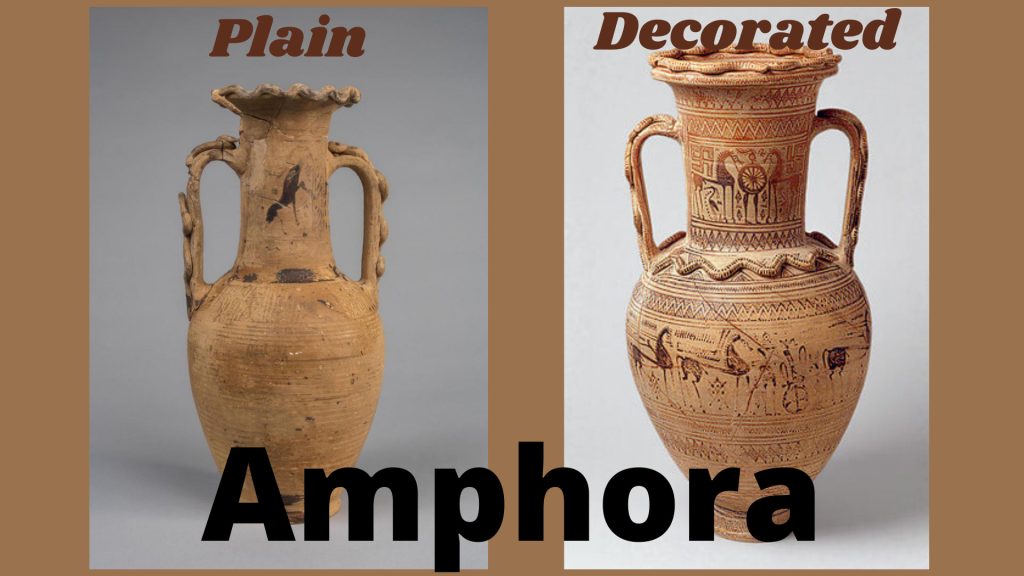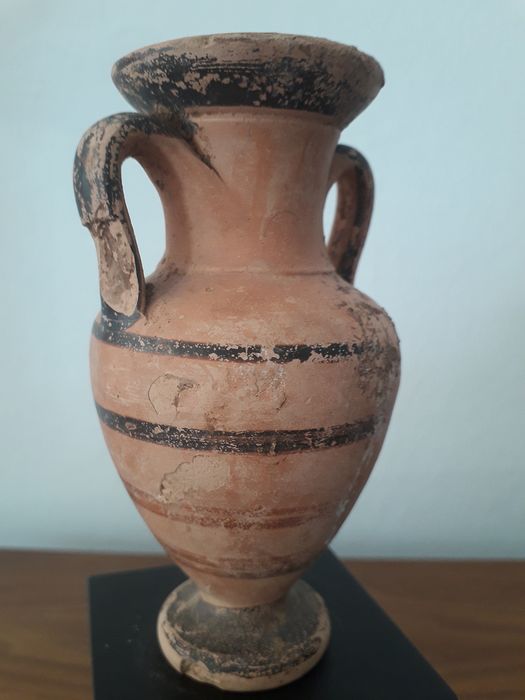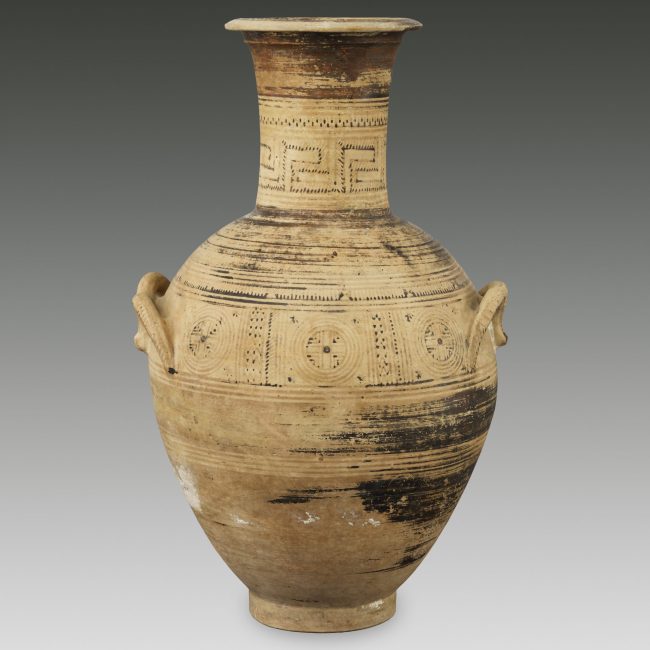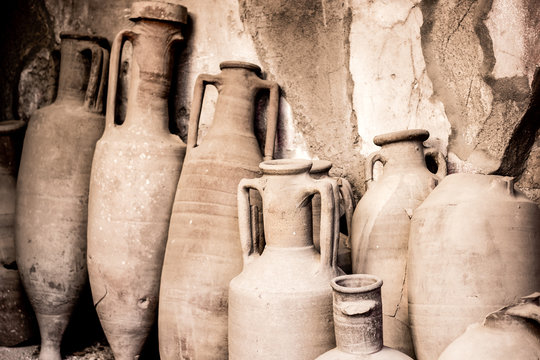Amphora, a term often heard but seldom understood in its entirety, holds a crucial place in the world of archaeology. These ancient Greek jars or vases, characterized by their large oval bodies, narrow cylindrical necks, and twin handles, have stories to tell that stretch far beyond their distinctive shapes. In this article, we delve into the world of amphora, uncovering its history, types, functions, and the invaluable insights it provides to archaeologists.
According to Merriam-Webster dictionary, Amphora is an ancient Greek jar or vase with a large oval body, narrow cylindrical neck and two handles that rise almost to the level of the mouth.
According to the Cambridge dictionary, Amphora is a long, narrow clay container with two handles, wider at the top than at the base, that was used in ancient times, especially for storing oil or wine.
The word “amphora” finds its roots in the Greek word “amphi-phoreus,” meaning ‘carried on both sides.’ These containers have been an integral part of ancient societies, particularly during the Neolithic period. Crafted from baked clay or terracotta, they were not only functional but also served as canvases for intricate designs, offering a glimpse into the artistic sensibilities of the time.

Two Main Types of Amphora
Amphora can be broadly categorized into two main types:
- Neck amphora- In neck amphora, the body and neck meet at a sharp angle. This angular design was not only aesthetically pleasing but also served practical purposes in terms of storage and transportation.

- Belly amphora (or simply amphora)- Contrasting with the neck amphora, the body and neck of this type form a continuous curve upward. This design was favoured for its unique aesthetic appeal.

Functions
Amphora served a myriad of functions in ancient times, making them a ubiquitous presence in archaeological sites. Some of their primary roles included:
Storage
Amphora were commonly employed as storage vessels, capable of housing a wide range of goods, from olives and cereals to oils, perfumes, and various foodstuffs. However, their most famous use was as wine bottles, embodying the ancient art of viticulture and winemaking.
Transportation
Due to their sturdy construction and ease of handling, amphora played a vital role in the transportation of goods across vast distances. They were the cargo containers of their era, facilitating trade and commerce between civilizations.
Burial Practices
Intriguingly, amphora was not limited to the realm of commerce. They also found a place in burial practices, where they served as containers for the ashes of the deceased. This practice reflects the cultural significance of amphora and their association with the afterlife.
The Archaeological Significance
Amphora is of paramount importance to archaeologists for several reasons:
Historical Insight: The presence of amphora at archaeological sites offers valuable insights into trade relations between ancient civilizations. The types of goods found within these containers shed light on the commodities that were exchanged and the extent of economic interactions.
Everyday Life: Amphora reveals much about the daily lives of ancient people, including their customs and rituals. The contents of these vessels provide clues about the dietary preferences and culinary practices of the past.
Chronological Dating: Amphora can aid in dating archaeological sites, as the designs and styles of these vessels evolved over time. This assists archaeologists in constructing a chronological framework for historical periods.
In conclusion, amphoras, with their unassuming shapes and utilitarian origins, carry within them a wealth of historical and cultural information. These ancient Greek vessels are not mere relics but portals to the past, helping archaeologists piece together the intricate tapestry of human civilization. As we continue to unearth these vessels, we gain a deeper understanding of our ancestors, their way of life, and the connections that spanned across ancient lands.
Also read:
- Lamarck’s Theory of Evolution
- Bipedalism and Structural Changes
- Natufian Culture
- Cache of ancient coins dating back 100,000 years unearthed in Japan
- James George Frazer








6 Comments
Renate
2 years agoThanks , I’ve recently been searching for info about
this subject for a while and yours is the best I’ve came upon till
now. However, what about the bottom line? Are you sure about the supply?
Britt
2 years agoThanks for sharing your thoughts about website. Regards
Michale
2 years agoThis info is worth everyone’s attention. Where can I find out more?
Laurence
2 years agoThanks for sharing such a fastidious idea, paragraph is
fastidious, thats why i have read it entirely
Jacob
2 years agoThanks in favor of sharing such a nice opinion, article is fastidious, thats why i have
read it completely
Veola
2 years agoPretty nice post. I just stumbled upon your weblog and wished to
say that I’ve truly enjoyed browsing your blog posts.
After all I’ll be subscribing to your feed and I hope you write again very soon!